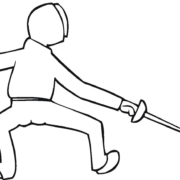What Makes Something “Evidence” in Debt Cases?
What Makes Something Evidence
For a free copy of this article in PDF format, click here: what makes it evidence
This article is a brief but important discussion about “evidence,” what it is, how it works, and what to do about it. I get a lot of questions about “striking” documents at various times in a lawsuit, so this may help with that, too. While this article is intended to be a stand-alone article, it is also a part of our Glossary of Legal Terms, where we explain legal concepts and language to non-lawyers. Please feel free to use that resource if you run into a legal term you don’t understand.
But in this article we discuss something that most people understand a little bit about.
What is Evidence?
In a way, evidence is just “stuff.” It’s stuff that is supposed to relate to a case, so let’s start by introducing the concept of “relevance,” which is the formal way in which material relates to a case.
Relevance
Something is “relevant” if it makes some fact that matters to your case (is “material” to your case, in legalese) somewhat more or less likely to be considered true. A bank statement, for example, might be relevant to show how much you owe, or that it is your account.
It doesn’t have to “prove” it. Just make it more or less likely, and of course some evidence is much, much more convincing than other things might be. In debt law, the “credibility” of evidence actually rarely matters because what the debt collectors typically use are credit card statements and other things like that. For some reason the courts almost always believe them, despite all the stories of how often they’re wrong.
In any event, this video will presume that the “evidence” of which we are speaking is relevant. But you should never just do that. Always consider the question of relevance as one of the important first questions. Does it impact on something the debt collector must prove to establish its case? Anything else is not relevant and should be objected to on that basis.
How is Evidence Used
So what turns this relevant stuff into “evidence?”
The “stuff” becomes “evidence” when you ask the court to consider it for some specific purpose. That is deceptively simple, and you might think it doesn’t mean anything. But it means a lot, actually. It means that when a debt collector attaches statements or affidavits to its petition, it is NOT evidence, unless the petition is a “verified petition” where somebody is swearing that the allegations, and the evidence attached are true. Those are quite rare, but if you have one, you will have to verify your answer as well. So in that situation the stuff is a lot like evidence.
However, we need not consider that further because in almost all debt cases, there isn’t a verified petition, and the documents attached are NOT evidence in any present sense.
This in turn suggests that a motion to strike the attachments is pointless, and you should also be aware that the plaintiff is not trying to prove its case – so a motion to dismiss for lack of evidence is also pointless at that stage.
Stuff generally becomes “evidence” at two times in a case.
- On an “evidentiary motion.”
- And at trial.
An evidentiary motion is a motion that calls for some sort of proof. Most typically, that would be a motion for summary judgment, but a motion to dismiss for failure to serve would also involve proof of that failure. Likewise, motions to compel require that you show the court certain facts, and motions for sanctions can involve much more involved fact finding.
And a motion to vacate is also going to require some very specific evidence.
But in most of these situations you’re simply presenting evidence to show a rational person could believe something – you’re not asking the court actually to believe it. In motions for summary judgment you’re asking the court to find, decisively, that certain facts are established beyond dispute, and at trial you’re asking the fact finder to believe you and not the other person.
Evidence is always Evidence of Something
In any event, we now have stuff that has become evidence. It’s always evidence of SOMETHING. Right?
It’s supposed to show some specific, important thing is true or not true. And of course evidence could show more than one thing is true or not true, which is important.
Evidence is always evidence of some fact or facts, in other words. You don’t move to “strike” it. You OBJECT to it when the other side tries to get the court to consider it. You object to its being used to prove some specific fact (but maybe not some other fact).
Admissibility
Before the court can consider the evidence, it first must decide whether it is “admissible” (It has to decide whether it can consider it.)
We talk a lot about admissibility in other materials, because most debt cases are decided based on
whether evidence – usually affidavits and bank statements – is admissible. Your objection to evidence is to its admissibility. In other words, you are asking the court not to consider the evidence at all. At a jury trial, it’s important to do this before the evidence is seen by the jury, so you object to the question asked (rather than the answer given) if possible, or you object when the other side asks to show it to the jury.
Remember that it is possible to have evidence admitted for one thing but not another thing. Suppose you’re claiming, for example, that you sent a request for verification, but they never verified before suing you. Your copy of the letter would be proof of what the request said. Your testimony that you sent the letter would be proof that you sent it, but you would ALSO need some proof that they received it. Hence it makes sense to send them by certified mail.
The letter itself is admissible about the contents of the request but not the receipt.
Normal people are not used to breaking things down in this way, and this turning of everything into an elaborate flow-chart takes some getting used to. But you need to think that way both to get your own evidence admitted, and also – more importantly in debt cases – to attack the debt collector’s evidence.
Remember that if the debt collector manages to get credit card statements admitted into evidence that will almost always be fatal to your defense.
Your Legal Leg Up
Your Legal Leg Up is dedicated to helping people defend themselves from debt lawsuits without having to hire a lawyer. Lawsuits have a number of points where specific action is called or, and we have products to help you deal with most of these situations. We also have memberships that give you access to more materials and better training, and also provide a regular opportunity to ask questions and get answers in real-time. You can use this time to find out what the debt collectors are trying to do and what you might do in response, and you can get guidance on the issues that matter and how to think about and address them.
In addition to that, our website is a resource for all. Many of the articles and materials are reserved for members, but many others are available to everyone. Every page has a site search button in both the header and footer. Put in a key word – a word you think relates to what you’re looking for – and enter. You will get a page of results.
Products Related to this Article
Because this is a general article, there are not any products specifically related to this post. I do suggest asserting your rights early and often, and you might find our Take Control of your Life product helpful in that. I also suggest great care in researching and analyzing facts and law. You might find our Guide to Legal Research and Analysis product helpful for that.
Beyond that, if you are facing significant debt problems, I’d suggest our memberships.
Memberships
Members get discounts on all products as well as unlimited opportunities to join our regularly scheduled teleconferences. This gives invaluable real-time assistance, answers to questions, help with strategies, and encouragement. You also get the Litigation Manual and the Three Weaknesses Report for free with membership. Find out about memberships by clicking the “About Memberships” link in the menu at the top of the page.
Sign Up for Free Information
You can sign up to receive information from us by clicking on this link and following the instructions: https://yourlegallegup.com/blog/sign-up-for-free-information/
What you’ll receive if you sign up is a series of several videos and articles spread out over several days, and then you will occasionally hear from us as we add information to the site. We don’t always announce that information, though.
What you will not receive is any marketing from other people – or much from us, either. Our goal is to make the site more useful to members and visitors, not to swamp anyone with sales materials. The information we send will have links to information or products that we think may be helpful.




